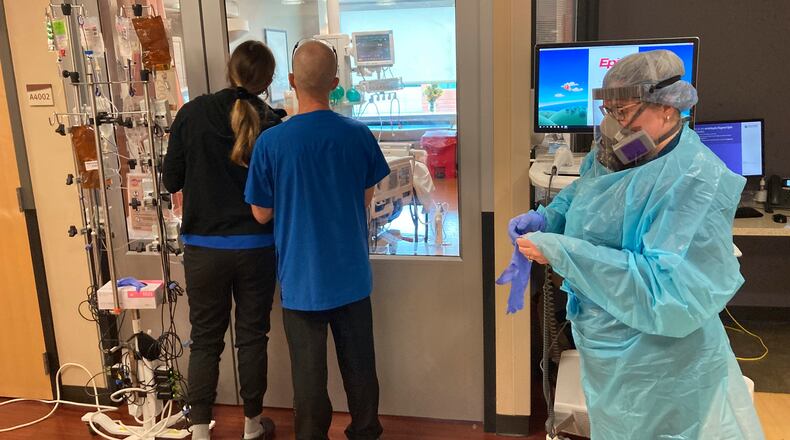Hospitals across Ohio have limited visitors at various times during the pandemic in order to slow the spread of the coronavirus.
Greater Dayton Area Hospital Association President Sarah Hackenbracht said her organization will discuss the bill, and that hospitals have continued to evolve visitation policies as the challenges with pandemic have changed.
“In 2020, we truly struggled to ensure a safe visit for patients, visitors, and employees when there were challenges with (personal protective equipment) availability and no vaccination. Even as those factors have changed in 2022, our goal continues to be jointly focused on safeguarding the health and well-being of our patients, their loved ones and our hospital employees. Hospitals need the flexibility to make decisions based on real-time scenarios —particularly in the middle of a public health crisis.
Unless there’s a public health order prohibiting it, the bill says, hospitals would be required to allow in-person visits during a pandemic from “the patient’s family, caretakers or clergy,” plus lawyers and “other individuals providing care or companionship to the patient.”
Even if a public health order is in place prohibiting visitors, hospitals couldn’t bar visitation “if the patient’s condition becomes terminal.”
The patient, or someone empowered to make decisions for them, could designate allowed visitors.
But those visits must be “conducted in such a way as to not endanger the health of hospital patients, staff or other individuals in the hospital facility.”
The Ohio Hospital Association is still reviewing the bill, spokesperson John Palmer said, and hasn’t taken a position on it.
Although the bill names family first, most of its supporters so far have been members of the clergy. During the Jan. 25 committee hearing, state Rep. Tim Ginter, R-Salem, a committee member and pastor, echoed witness testimony and said he “almost literally had to fight my way into hospitals,” to visit COVID-19 patients in the past two years.
Under the bill, hospitals could require visitors to wear masks and take other “reasonable safety precautions.” They could limit the number of visitors to a patient at one time, but not down to one.
Hospitals could require screening for disease symptoms before allowing entry, and prohibit entry to anyone showing symptoms. They could require visitors to stay in the patient’s room or a designated visitor space, and limit their other movements around the building.
About the Author

